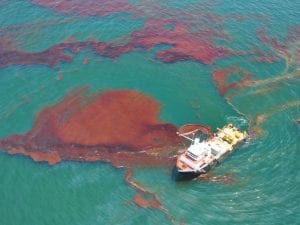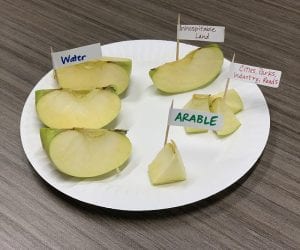Science fair can be an engaging and exciting chance for students to do some actual experiments and use the Scientific Method for the first time. However, it can be really challenging to narrow their interests into a single, testable problem question. PopEd lessons can help harness student enthusiasm for global environmental challenges and turn it into productive, specific experiments.
Below, we’ve done some rewrites of interesting, but not very testable, science fair problem questions. Check out the resources that go with each.
Instead of: Which material is most eco-friendly to use in household products and packaging?
Try: How does the type of packaging material used affect the amount of time needed for composting breakdown?
Composting labs are a great way to see how everyday items and consumerism can negatively impact the environment. Our lesson Scraps Into Soil guides students through the process with food scraps as well as household products like plastics and aluminum foil. Using the same set-up, different students can test multiple different items and compare them with peers’ experiments. You could even challenge them to test out a new product claiming to be biodegradable (like bioplastics) to see if it lives up to the hype.
Instead of: How can you clean up an oil spill?
Try: What is the effect of different types of clean-up methods on the amount of oil collected in a spill simulation?

Our lesson Like and Oil Water guides students through the Engineering Design Process for oil spill clean-up. They can even emulate some of these existing spill solutions, as well as designing their own solutions with common household materials. We include worksheets for how to monitor the amount collected by each prototype, and reminders to keep the time and spill conditions constant.
Instead of: Why are humans still exhausting renewable natural resources like forests and fresh water?
Try: How does the rising rate of demand affect the amount of a natural resource available over time?
Timber is one of our most popular lessons for incorporating math into the science classroom and vice versa. This lesson walks students through a simulation of forest growth, as popsicle stick “trees” are cut down to support an exponentially growing demand for lumber. Once you’ve done the basic simulation explained in the lesson, students can try different rates of demand, perhaps based on specific population or resource consumption numbers in the real world. They could also find ways of representing different types of forest, such as old growth vs new growth, and modify the simulation to get more data.
Each of these lessons can provide great opportunities for science fair questions, ones that can easily and meaningfully be tested in the classroom. We’ve also created a printable/sharable Try This, Not That cheat sheet with some tips for students on each of these potential topics.
Image credits: Skimming oil from the water in the Gulf of Mexico (NOAA)



